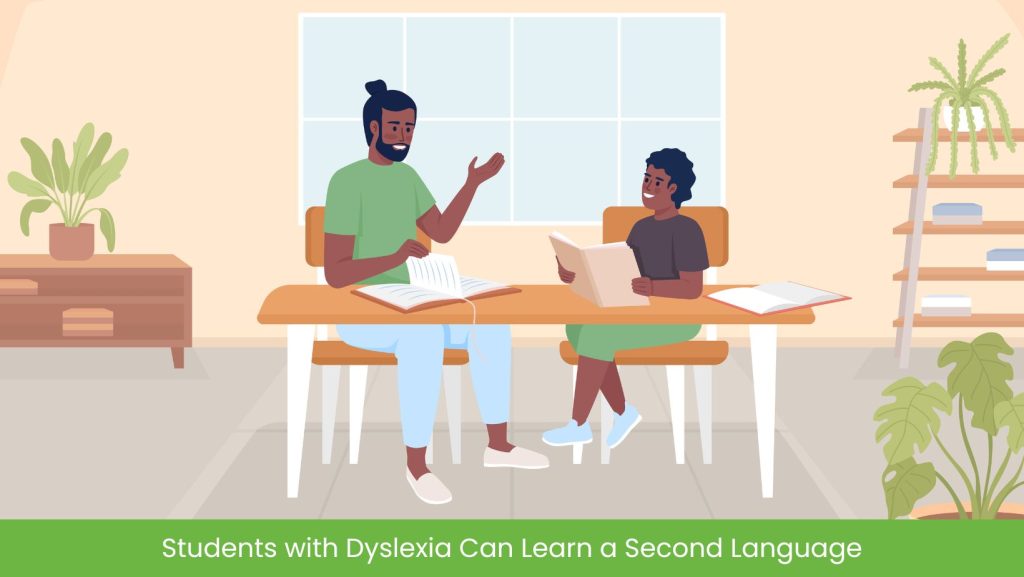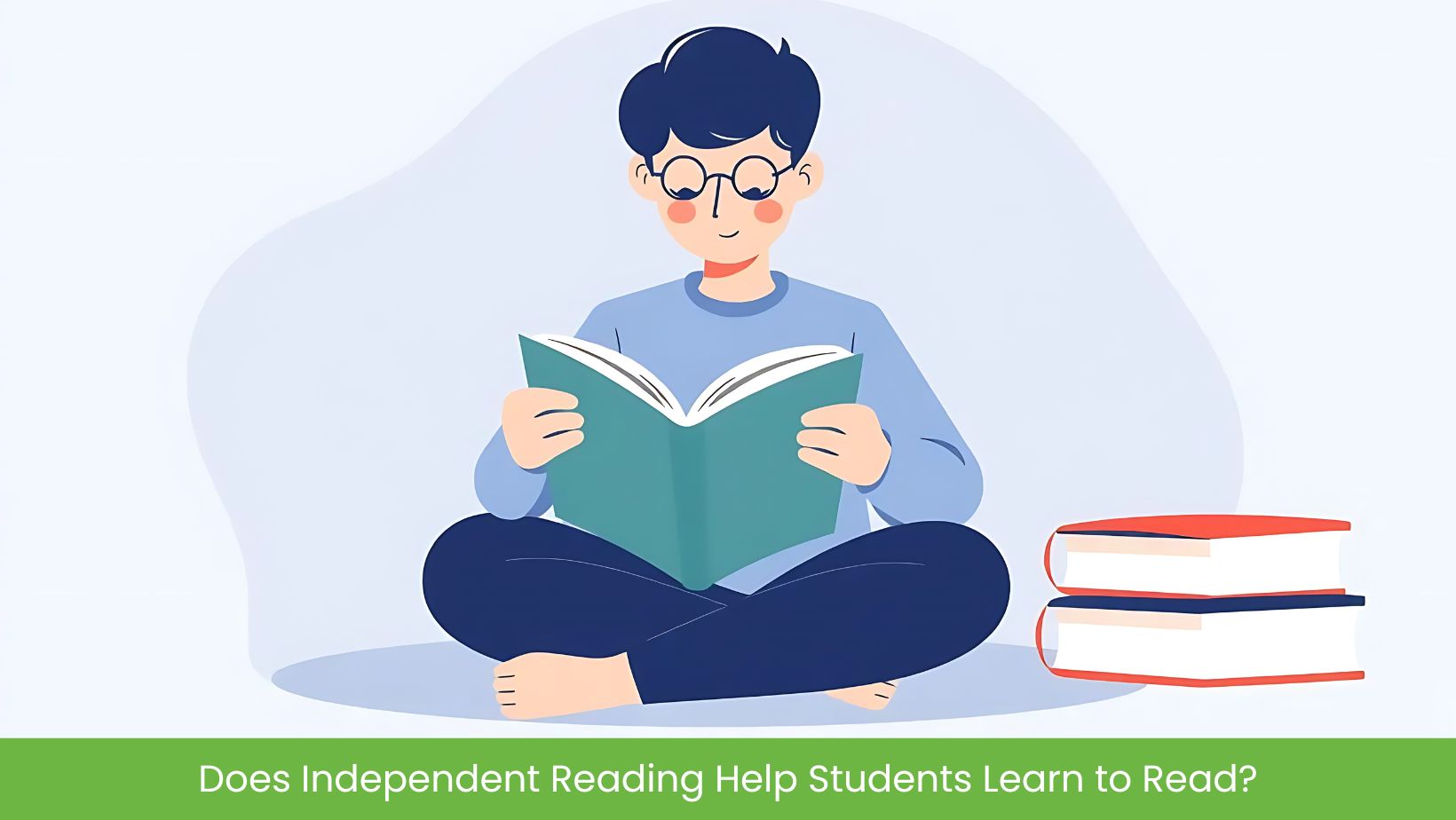If a student with dyslexia is struggling to read, will their disability make it too challenging for them to learn another language? While on the surface that may seem the case, teachers and parents have long observed that students with learning disabilities who travel to other countries and are immersed in the language of another culture can become bilingual.
According to educators at Landmark College, which teaches students with dyslexia, ADHD, and other learning challenges, approaches to instruction that acknowledge and compensate for student difficulties can open the door to bilingualism for students who struggle with language. The college has offered effective multi-semester sequences in Spanish, French, and American Sign Language for decades.
Students with dyslexia, they observe, have trouble processing elements of language, particularly its sound structure (phonology). These problems become more pronounced when a student starts learning to read, spell, and write, which requires them to match the sounds of words with letters.
The challenges remain when students begin foreign language study. Dyslexia in bilingual students will be present in both languages. Learning a second language relies heavily on the ability to identify, remember, and articulate a set of unfamiliar speech sounds. These difficulties are compounded by traditional approaches used by most second-language teachers: an aural-oral immersion strategy which overloads the low phonological processing ability in these students. Instead, they suggest focusing on highly structured, multisensory approaches that reinforce both spoken and written language.
What Is Dyslexia?
Dyslexia is a common learning difference that primarily affects someone’s ability to read, write, and spell. Dyslexia Canada identifies it as a brain-based learning difference that impairs reading skills. People with dyslexia (about 10% of school-age children) often read and write slowly, confuse letters, have inconsistent spelling, and may struggle with processing written information. Dyslexia has nothing to do with intelligence or the ability to learn; it’s simply a different way of processing language.
Students with dyslexia may find second-language learning more challenging because they often struggle with decoding (breaking words into sounds), which is crucial for reading fluency. In second languages, unfamiliar vocabulary, grammar rules, and new sounds can add an extra layer of complexity. But harder doesn’t mean impossible. With the right tools and strategies, students with dyslexia can enjoy the benefits and opportunities of accessing a new language.
Choosing the Right Language Matters
Some languages are more accessible for students with dyslexia than others. For example, Spanish, German, and Italian are more phonetic, meaning words are pronounced the way they’re spelled—making them easier for students with dyslexia to decode. Non-phonetic languages (like English or French) can be trickier because they contain a lot of irregular spellings and exceptions to the rules. That doesn’t mean students with dyslexia should avoid languages like French or English, but it does mean that a structured approach is key. Helping students with dyslexia succeed in second-language learning means using evidence-based strategies, personalized support, and lots of encouragement.
Start Early and Provide Support Right Away
Early intervention is always a good idea. If a student struggles with reading in their second language, it’s better to give them extra support as soon as possible. Don’t wait to see if they “catch up.” Begin building their skills with individualized instruction.
Use Multisensory Learning Techniques
Multisensory learning is a game-changer for students with dyslexia. This approach engages multiple senses—sight, sound, and touch—to help students process and remember new information. For example:
- Visual aids like color-coded charts or flashcards
- Tactile learning (using letter tiles or writing words in sand)
- Auditory repetition (listening to words and phrases repeatedly)
It’s also important to make language learning active and interactive—like practicing new vocabulary through hands-on activities or using apps that combine audio and visuals.
Consider the techniques in the Rassias Method, an immersive, theatrical approach to language instruction developed by Dartmouth College Professor John Rassias to help train Peace Corps volunteers. His approach emphasizes rapid, high-energy drills, dramatic role-playing, and immediate correction to create an engaging, low-pressure environment that reduces fear of making mistakes. By simulating real-life conversations and reinforcing vocabulary and grammar through repetition and emotional engagement, the method accelerates language acquisition and builds confidence. Its success lies in its ability to make learning dynamic and instinctive, helping students internalize the language quickly and use it naturally in conversation.
Focus on Vocabulary and Comprehension First
For students with dyslexia, focusing on understanding spoken language and building vocabulary can be more effective than diving straight into grammar rules or complex writing tasks. Students benefit from receiving plenty of time to develop their listening and speaking skills before expecting perfect written work.
Make Reading Materials Relevant and Engaging
Reading in a second language can feel overwhelming, especially if the material is unfamiliar or culturally specific. Choosing texts that are interesting and culturally relevant to the student will boost motivation and make comprehension easier.
Use Technology and Tools
There are many tech tools available to help students with dyslexia learn a new language. They include:
- Speech-to-text apps for writing assignments
- Text-to-speech programs to help students follow along with written text
- Language learning apps like Duolingo, which use visuals and repetition to reinforce new words
Bilingual Education
Bilingual programs can offer significant benefits for students with dyslexia, especially if they’re well-supported. Research shows that students who develop strong skills in their home language often do better academically and find it easier to learn a second language. The key is to ensure the school has the resources to support dyslexic students in both languages. If you’re considering a bilingual program (such as French immersion), ask how the school tailors instruction for students with learning differences and whether they offer additional support services, like one-to-one tutoring or small-group instruction.
It’s Okay to Keep Using the Home Language
A common misconception is that parents should stop speaking their home language if their child has dyslexia, thinking it might make learning easier. But experts like those at Landmark College and Professor Emeritus Fred Genesee of McGill University disagree. There’s no evidence to suggest that using a home language interferes with learning a second language. In fact, maintaining the home language can have big benefits, including stronger family connection; better cognitive flexibility; and improved second-language learning, especially when parents engage in reading and literacy activities at home
Encouraging parents who speak a different language to use it at home enriches their child’s home language experiences and competence, says Professor Genesee in a 2019 interview in Psychology Today. “We know that strong skills in the home language prepare[s] children to learn a second language and to do well in school because there are significant positive effects of the home language on second-language learning. This means that parents who continue to use the minority/home language can facilitate their child’s chances of becoming proficient second-language learners.”
Champion Your Child’s Efforts
Through a combination of early support, multisensory learning, and personalized instruction, students with dyslexia can become second-language learners. Remember, what works in one language often transfers to another. Stay positive and patient. Language learning takes time for everyone, and particularly for students with dyslexia.
Help at Hand
At Evoke Learning, we specialize in working with students who have dyslexia and other learning differences. Reading tutors play a crucial role in supporting students with dyslexia. Understanding the neurobiology of the disability and becoming familiar with research-informed intervention strategies are essential aspects of effective tutoring. While dyslexia may have a hereditary component, neural systems can be shaped, and targeted interventions can make a significant impact. At Evoke, we offer structured, systematic, and individualized instruction that addresses the unique challenges of dyslexia while building on the student’s strengths. Regular assessment and student progress monitoring ensure that interventions are working, and adjustments can be made as needed.
Contact us to learn how we can help your student overcome their learning disability and set the stage for new language acquisition.


